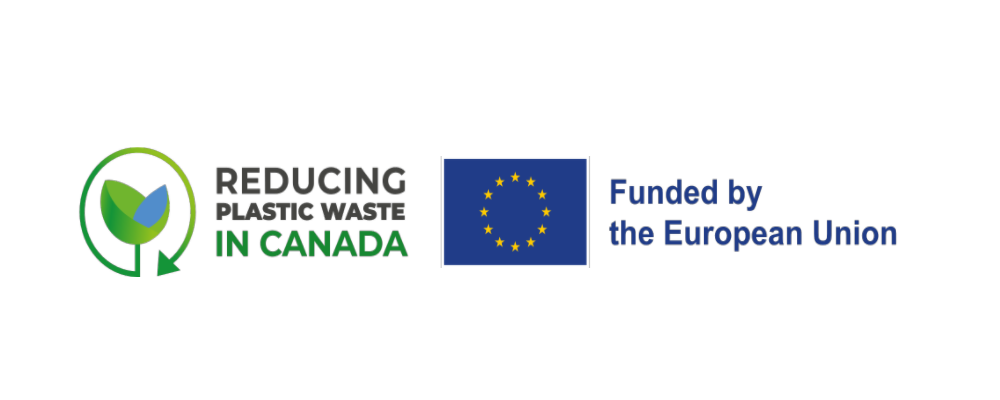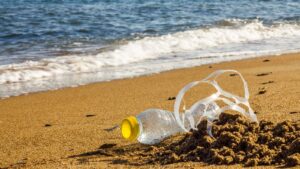Story 1: The Importance of a Communications Campaign to Shape Sustainable Consumers’ Response to a New Policy
A successful communications strategy must change consumer behaviour which is rooted in values, beliefs and attitudes and are influenced by other socio-economic factors. Major policy announcements to reduce plastic waste in the EU have included successful plastic campaigns to help drive change toward more sustainable consumption.
Today’s sophisticated campaigns focus on single issues with advice on practical actions, and use various multi-media including social media, which is now a widely available and influencing tool. Influencing consumer behavior is no small task. Changing consumption practices and societal norms takes time, as public education campaigns face tough competition for consumer attention. Consumers are looking for greater significance, transparency and ethics to be motivated to change, and this must be delivered in a way that quickly grabs attention.
To succeed in driving sustainable consumption behaviour, a campaign requires:
- A good understanding of the factors that motivate individual choices (this can be learned from other campaigns).
- Design of appropriate tools with messages that will resonate with various audiences. Consumers have different needs with respect to information and their potential to be influenced
- Consideration of many variables, including income, age, biases, attitudes and gender.
- The need for information and messaging to not overshadow convenience and simplicity.
- Incorporate behavioural change theory to ensure messages are compelling.
Most consumers have a positive but passive view of sustainable consumption. Today’s consumers are savvy with a multitude of information sources from the global marketplace at their fingertips. With consuming lifestyles at their peak, transforming the consumption mindset towards a sustainable one is a complex but necessary task for any actor in the circular economy.
Consumer surveys have tried to isolate the factors influencing purchasing behaviour, such as price, quality, and sustainability, however results show that factors are variable. In the context of sustainable consumption intrinsic behavior attributes include knowledge, motivation, beliefs, habits, values, attitudes, intentions, and other psychological variables, whereas extrinsic attributes include social and cultural norms, as well as monetary implications. The design of environmental campaigns and actions like nudging and community-based social marketing has recently benefitted from behavioral change theories to make the design of environmental messages more compelling and effective.
Government agencies, policymakers or intergovernmental organizations launch campaigns as part of efforts to align behaviour with a new regulation or initiative, to generate momentum for a new strategy, or simply to promote sustainable behaviour. This is a common approach in Europe, and for EU Commission strategies in particular.
Case Example: “Single-use plastics: are you #ReadyToChange?”To mark World Environment Day in 2018 which had the theme ”Beat Plastic Pollution”, the European Commission launched a major single-use-plastics focussed campaign. It was a public awareness-raising campaign to highlight citizens’ role in combatting plastic pollution and marine litter. The campaign used the slogan: “Single-use plastics: are you #ReadyToChange?”. The campaign stressed the importance of sustainable consumption, and the impact that personal choices can make in the effort to reduce plastic waste in the EU. The campaign launch also supported the EU’s 2018 Plastic Strategy, and proposed legislation (subsequently enacted in 2021) on banning the ten single use plastic items most commonly found in marine litter: cotton bud sticks, cutlery, plates, straws, stirrers, sticks for balloons, as well as cups, food and beverage containers made of expanded polystyrene and on all products made of oxo-degradable plastic. The campaign included a single picture which gave the public the specific visual of the key single use plastics they should avoid using. Messaging was clear, and alternatives suggested. The campaign also included sharable social media content to drive momentum, and an informative web platform with details on EU actions and initiatives that address plastics. |
Key Messages
|
URLs / References
European Commission website https://ec.europa.eu/info/news/single-use-plastics-are-you-readytochange-2018-jun-05_en
Stockholm Environment Institute (SEI) and the United Nations Environment Programme (UNEP), 2021 Reducing plastic pollution: campaigns that work. https://www.sei.org/wp-content/uploads/2021/02/210216-caldwell-sle-plastics-report-with-annex-210211.pdf
Fogh Mortensen, L., Tange, I., Stenmarck, Å., Fråne, A., Nielsen, T., Boberg, N. and Bauer, F., 2021. Plastics, the circular economy and Europe′ s environment-A priority for action. EEA Report, (18/2020). https://www.eea.europa.eu/publications/plastics-the-circular-economy-and/download
The European Union (EU) project on Reducing Plastic Waste in Canada




